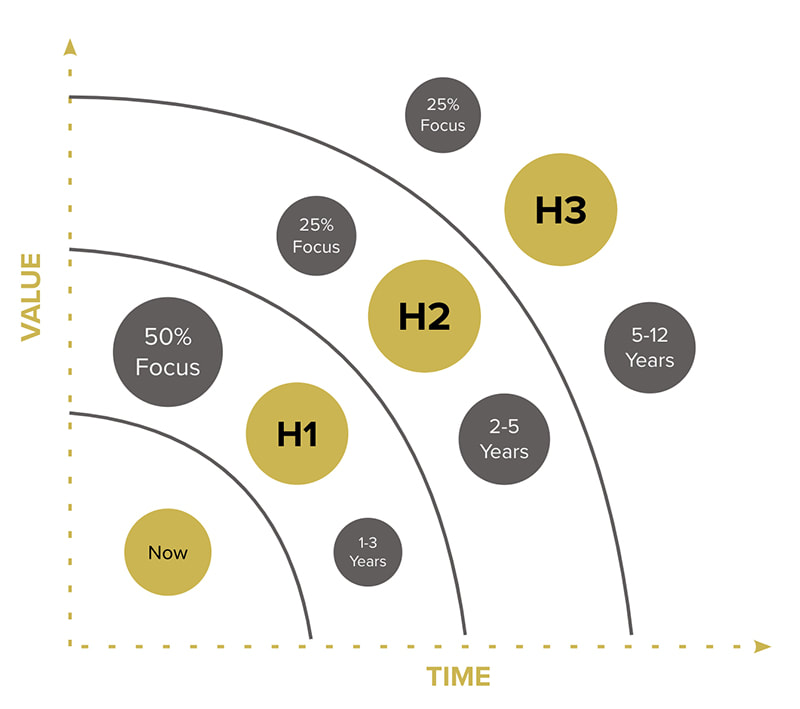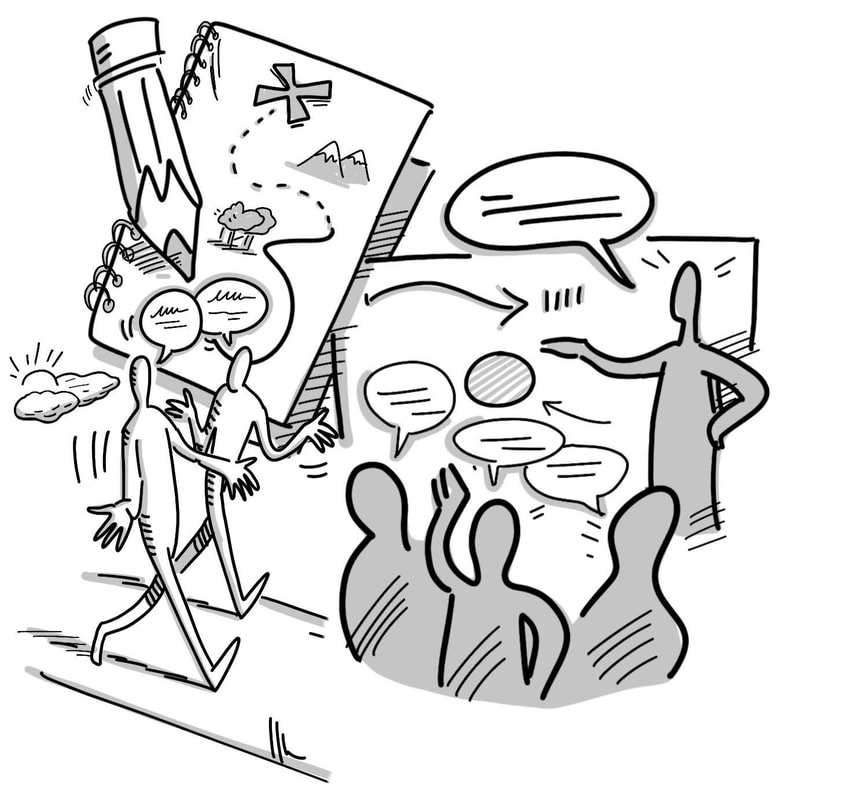|
THE 7 TYPES OF INNOVATION
ISO TC 279 defines innovation as "a new or changed entity realizing or redistributing value." At Illustrious, we define innovation as the act of creativity and experimentation that turns your best ideas (and even your best failures) into value. This means that whether we’re talking about corporate innovation or a small business that encourages innovation best practices on small teams, you can’t have innovation without the ability to 1) generate and elevate new ideas, 2) iterate ideas into process maps and prototypes, and 3) validate and scale those idea prototypes into the right audience fit. Innovation strategy falls into numerous categories. These include:
THE 3 HORIZONS OF INNOVATION An organization’s innovation strategy also falls into what McKinsey and Company call horizons. These are the time-bound areas of focus for innovation efforts. The first horizon (H1) is the home for any short-term innovation strategy and includes both “incremental” and “notable” shifts along the value scale. Incremental shifts include improvements or additional unique features to products and services (think a toothbrush with rubber grips or a flipchart with handles). According to Magnus Penker, author of How to Assess and Measure Business Innovation, “notable” shifts include a “distinguishable advance in design, process or business model” (think the RAZR phone or disposable hearing aids). The second horizon (H2) includes mid- to long-term innovation efforts and results in significant or “radical” shifts. This means there is an advance in the product or experience design as well as to the process or business model (think Southwest Airlines or iPod/iTunes). The third horizon (H3) is where we see game-changing transformational shifts. The hallmark of the third horizon is that at least two important advances are made in a combination of design, process or business model. (Think market disruptors like the razor and blades model or the light bulb and electrical grid.) Each of these corporate innovation types requires a different leadership style (entrepreneurial, democratic/participatory, coaching/charismatic, etc.). Each type requires a decision to buy, build, partner or do “open” innovation (collaboration outside the walls of the business). With each leap, what got you there will not get you where you’re going. At each horizon, you will take on new or different team members, mindsets, language, business systems and management methods. When you commit to the practice of innovation, you are not only committing to changing your surroundings, but also to changing yourself. If you’re ready to have a conversation about the inner work required to lead innovation in your business, we’d love to help you shine.
0 Comments
by Rachel Blasco
From updating your strategy to scaling your team, growth is change and change is hard. Visual Consultants are hired to “facilitate the organization to perceive, understand, and develop the organization’s business and human processes, in order for the client to improve the situation themselves, as they define it.” Visual Consultants work with clients to (quite literally) paint the picture their teams are trying to describe in vivid details that is clear and easy to understand. In other words, visual consultants are the map makers and cartographers for our ideas in order to define and put plans into actionable stories. Visual consulting is at its essence, storytelling. The practice developed out of the constant need for innovation in businesses that want to remain not only at the top of their game, but to continue to move the ball forward in their field. Visual consultants are at the intersection of three fields that have given rise to a new way of working: Visualization, dialogic practice, and change consulting. The outcome is both rewarding and inspiring to executives and teams alike. Visual storytellers and consultants both design and lead change in organizations and communities that may otherwise feel unmotivated or simply unclear on what the objectives and expected outcomes of the group may be. Ultimately, this is an orientation in process thinking and process leadership. So, clients seeking alignment on new visions, process transformation, innovation, culture change, and sustainable results get the results they are looking for in hiring a visual consultant to bring order to the chaos. Why Seeing is Believing In both high profile corporate coaching and small personal development circles, creating a clear picture around your goals and steps to get there is a central topic. Look at the vocal facilitators and consultants as pros at this. Navigating both verbal story and visual landscape, these experts bring design thinking and creativity to the gray landscapes of corporate agendas and enhance team enthusiasm and commitment. An article in Forbes, Neuroscience Explains Why You Need To Write Down Your Goals If You Actually Want To Achieve Them, discusses the research behind describing or picturing goals and the strong association with goal success; and, people who very vividly describe or picture their goals are anywhere from 1.2 to 1.4 times more likely to successfully accomplish what they set out to do. Think about visual facilitation and storytelling as the map to your destination. It’s much easier to get to where you are going if you have a better picture of what to expect or look for. It helps our monkey brains process more efficiently, and focus on what matters. If you are experiencing the following, you may need someone to consult with on your vision, culture, story or strategy. Some of the main complaints among brands and businesses that would benefit greatly from visual consultants are:
With all of this in mind, and especially if you are experiencing any of these issues, it makes sense to hire visual consultants to facilitate innovation workshops and improve overall team output and performance while defining what the next chapter of your business will look like. If you still don’t know where to start or what this might look like for your organization, we’d be happy to schedule a quick 30-minute call. |
Details
ABOUT THE AuthorJoran Slane Oppelt is an international speaker, author and consultant with certifications in coaching, storytelling, design thinking and virtual facilitation. Archives
March 2024
Categories
All
|



 RSS Feed
RSS Feed